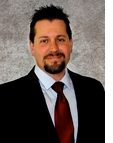
| November 2014 | Past Issues | Printer-Friendly | Advertise | Affiliates Search | Find a Pest Control Operator | PCOC.org |
|
EVP NOTES

This is the season for giving thanks. Thanksgiving is my
favorite holiday, probably because it was the first holiday that I spent in the
U.S. ... 40 years ago! Giving thanks is a uniquely human activity not observed
in the rest of the animal kingdom. It is also one of the most healthy emotions
that we can feel.
As I think about all the many things I have to be thankful for, I also reflect on the state of business and the many entrepreneurs who have made this country so great. Compared to Europe, which has not created any net new jobs in the last 10 years, we who live and work in the United States of America have reason to give thanks for a government climate that (generally and comparatively speaking!) encourages individuals to create risks in starting a growing a business and provides good jobs. Also, the ability to object to new laws and regulations in an open and honest environment. As an industry, one of the things that has always amazed me is the enthusiasm and camaraderie that is so powerful. At each of PCOC’s 19 district meetings, I see evidence that a caring and helpful attitude exists between individuals who may compete with one another during the day. This is truly empowering! For this, I am truly thankful, because is energizes me every time I experience it! This atmosphere is a significant indicator of what a powerful force the pest control industry is in California. It attests to the huge impact that your trade association can have on state government: the legislature, DPR and the Structural Pest Control Board — in protecting the pest control industry in California. My suggestion is that we all take a few minutes of quiet time to mentally list all the things we have to be thankful for. I think you will be surprised, even during these challenging economic times, that the list is quite long. Happy Thanks ... Giving! LEGISLATIVE UPDATE
The 2013-2014 Legislative Session of the California Legislature has adjourned. Click here for PCOC's Legislative Agenda. IN THE NEWS

NOTICE OF TRANSFER OF EMPLOYMENT In accordance with section 8567 of the Structural Pest Control Act, when a field representative or applicator changes his/her employment or an operator enters the employ of a registered company, the licensee shall notify the Structural Pest Control Board within 10 days of such change. This is done using a Notice of Transfer Form. There is no fee. Notifying the board is important for employers when a licensee leaves your company. This releases the licensee's name from your company; however, the licensee must sign the form. That is why employers should have every new hire sign this form in case they leave on bad terms or just quit with no notice. Notifying the board is also important for the licensee because if the board does not have their current information, they won't send the license renewal form or other information to the correct address. I have heard of more than one licensee losing their license because they did not realize their renewal was coming and did not receive notice from the Structural Pest Control Board because the board sent the form to their previous employer. The licensee never informed the board of a transfer of employment. FRUIT BATS AND EBOLA The Ebola virus causes an acute, serious illness which is often fatal if untreated. Ebola virus disease (EVD) first appeared in 1976 in two simultaneous outbreaks, one in Nzara, Sudan, and the other in Yambuku, Democratic Republic of Congo. The latter occurred in a village near the Ebola River, from which the disease takes its name. It is thought that fruit bats of the Pteropodidae family are natural Ebola virus hosts. Ebola is introduced into the human population through close contact with the blood, secretions, organs or other bodily fluids of infected animals, such as chimpanzees, gorillas, fruit bats, monkeys, forest antelope and porcupines found ill or dead or in the rainforest. Ebola then spreads through human-to-human transmission via direct contact (through broken skin or mucous membranes) with the blood, secretions, organs or other bodily fluids of infected people, and with surfaces and materials (e.g. bedding, clothing) contaminated with these fluids. People who have recovered from the illness can still spread the disease for up to 7 weeks. The largest-ever outbreak of Ebola was triggered by a toddler's chance contact with a single infected bat, a team of international researchers revealed, after a major investigation of the origins of the deadly disease now ravaging Guinea, Liberia, Ivory Coast and Nigeria. A group of 17 European and African tropical disease researchers, ecologists and anthropologists spent three weeks talking to people and capturing bats and other animals near the village of Meliandoua in remote eastern Guinea, where the present epidemic appeared in December 2013. They have concluded that the disease was spread by colonies of migratory fruit bats. BAT BUGS AND BED BUGS Are you sure you have Bed Bugs and not Bat Bugs? You better find out before you start the extermination process or you could end up re-infested. We usually treat an infested area with insecticides, believing that will end the infestation. Many a landlord has hired a professional pest control company, only to have his tenants complain of re-infestation within a short time after the treatment was applied. These landlords have found out the hard way that, if so-called "bed bugs" return, it is quite likely that those "bed bugs" are actually bat bugs. As the name would suggest, bat bugs are tiny little parasites that feed on bats. Bat bugs, like their hosts (especially brown bats that roost in colonies), love to live in dark, protected areas and narrow retreats where it is difficult to find and get rid of them. They live a relatively long time for such little creatures — up to a year in cool areas. Property owners will sometimes use aerosol bombs or other insecticide treatments, hoping to drive the bats away or kill any nesting bats while killing the insects. However, this is not a good course of action. Assuming that the bats are driven out by the aerosol, they will soon return. And a new infestation of bugs, carried in on the returning bats, will soon replace any bugs killed by the aerosol. The only effective way to get rid of the bugs is to get rid of the bats first, making sure they cannot return. Only then will any bat bug control be effective. Even if all the bats have been excluded and the site is now officially "bat-free," there is still a likelihood that bat bugs are lurking in the corners, behind the wallpaper, in the carpets, or possibly in bedding — searching for a new source of food. This source may end up being human tenants or their pets, so steps should be taken to get rid of the bugs. SPCB TESTING WORKSHOP The Structural Pest Control Board staff has been working with the Office of Professional Examination Services (OPES) on improving the Field Representative exams and has removed a number of questions that performed poorly. To help further improve the exams, the SPCB will be conducting a Field Rep branch 3 workshop on December 10, 2014 and a Field Rep branch 2 workshop on December 11, 2014 in Sacramento. Individuals that attend exam workshops receive: Continuing Education Credit; $125 per day; reimbursement of hotel stay, meals, mileage, tolls and parking; and airfare and rental car, if you live in Southern California. Workshops typically go from 8 a.m. to 4:30 p.m. Interested industry members can contact Dave Skelton at 916-561-8700 as soon as possible. Dave will start gathering a list of interested licensees. Etex / Electro-Gun
Termite Control Celebrating 35 years providing a non-chemical termite treatment product to PCO's throughout the USA! Call and find out the benefits of leasing www.etex-ltd.com UPCOMING EVENTS
2014
San Gabriel Valley Presents — L.A. Kings vs Anaheim Ducks
November 15
Africanized Honey Bee Class — November 18
Lodi, Calif.
Board of Directors Meeting — December 12-13
Hilton Palm Springs — Palm Springs, Calif
2015
Pest Ed 2015
January 13, 2015 — SOUTH
Quiet Cannon — Montebello, Calif.
January 15, 2015 — NORTH
Red Lion Woodlake Hotel — Sacramento, Calif.
Board of Directors Meeting / LEG Day — March 24-25, 2015
Hyatt Regency — Sacramento, Calif.
Leadership 2015 — May 29-30, 2015
Catamaran Resort – San Diego, Calif.
PCOC Expo 2015 — June 25-27, 2015
Hyatt Regency — Monterey, Calif.
Comings and Goings
Welcome to a new section of Newsbriefs! Here, we will give news from our members: new hires, retirements, etc. If you have some news you would like to share, please send a short sentence or two to breann@pcoc.org. MEMBER NEWS
MEMBER VALUE PROGRAM
PCOC MONTHLY INSURANCE/SAFETY TIP
The U.S. Department of Labor reports that slips, trips and falls make up the majority of general industry accidents. They account for 25 percent of all reported claims per year. More than 17 percent of all disabling occupational injuries result from falls. A good housekeeping program can help prevent many of these incidents.
What causes slip, trip and fall (STF) injuries? The U.S. Centers for Disease Control blames "contaminants on the floor" as the leading cause. In layman’s terms, that simply means floors that are wet or dirty. Keeping floors clean and hazard-free requires a good housekeeping program. Here are some basic steps to start yours: Put it in writing — A written housekeeping program can help ensure the quality and consistency of housekeeping procedures. Provide a copy to all employees, and they should know where to find additional copies. The program should describe:
Keep floors clean and dry:
Use the right kind of mats. Mats should:
Use proper cleaning procedures for floors:
Although a cleaning program might not seem as exciting or important as other injury prevention programs, it can make the difference between a slip, trip or fall accident ... or a safe workplace. For more suggestions on improving workplace safety, please contact the PCOC Insurance Program department of EPIC (formerly The Leavitt Group) at 877-860-7378 or email us at ProPest@epicbrokers.com. NEW MEMBERS
FREQUENTLY REQUESTED INFORMATION
NPMA LOGIN FOR JOINT MEMBERSHIP LOGIN: 313501 PASSWORD: PCOC
Department of Food & Agriculture Department of Pesticide Regulation (DPR)
www.cdpr.ca.gov DPR on Facebook www.facebook.com/capesticideregulation DPR on YouTube (see "playlists" for videos pertaining to new surface water regulations) www.youtube.com/user/californiapesticides DPR on Twitter twitter.com/ca_pesticides DPR LinkedIn www.linkedin.com/company/california-department-of-pesticide-regulation Healthy Schools Act http://apps.cdpr.ca.gov/schoolipm/ Structural Pest Control Board www.pestboard.ca.gov Find Your Legislator |
Pest Control Operators of California |
 |

